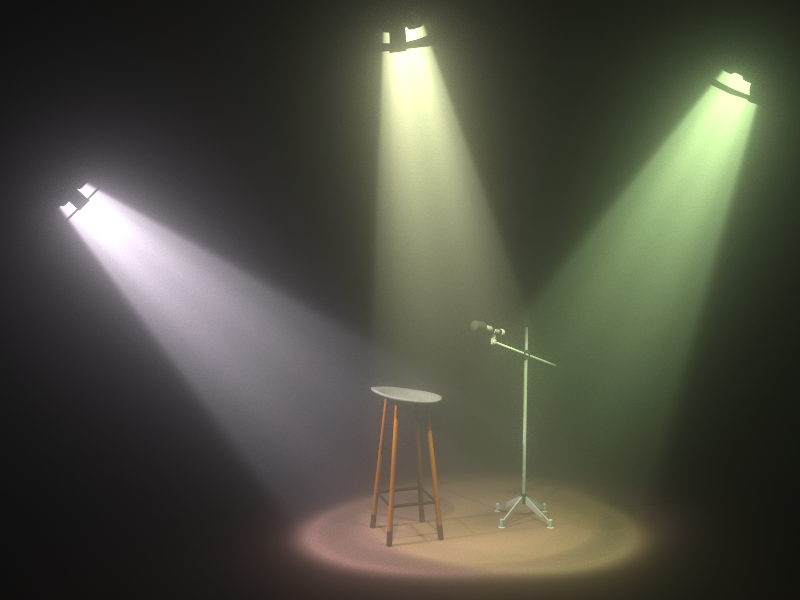Joint Importance Sampling of Low-Order Volumetric Scattering
(Image Comparison)
Below you can find image comparisons for the different methods and scenes used in the paper "Joint Importance Sampling of Low-Order Volumetric Scattering." We demonstrate the integration of our new joint importance sampling techniques into unidirectional path tracing, bidirectional path tracing, as well as the virtual ray lights method. We compare our results against the traditional (i.e. original) versions of these algorithms at equal render time and a ground-truth reference computed using many more samples. We also report RMS error for many of the results. For anisotropic media we use the Henyey-Greenstein phase function with scattering anisotropy g=0.9. In the image labels, "X-conn." refers to "X-random-decision connections", as designated in the paper. All images are tonemapped using simple exposure/gamma with a gamma of 2.2. The exposure has been set differently for each individual comparison (i.e. image pair) for best reproduction.
◄ back to the publication web page
Jump to method:
Unidirectional Path Tracing
Isotropically scattering homogeneous medium, single & double scattering (path lengths 1–3), 15 min:




Anisotropically scattering homogeneous medium (g = 0.9), single & double scattering (path lengths 1–3), 30 min:




Isotropically scattering homogeneous medium, path lengths 1–8, 120 min:




Anisotropically scattering homogeneous medium (g = 0.9), path lengths 1–8, 120 min:




Anisotropically scattering homogeneous medium (g = 0.9), path lengths 1–8, 480 min:



Anisotropic homogeneous medium (g = 0.9), single & double scattering (path lengths 1–3), 15 min:



Anisotropic heterogenous medium (g = 0.9), single & double scattering (path lengths 1–3), 120 min:



Bidirectional Path Tracing
Anisotropic homogeneous medium (g = 0.9), single & double scattering (path lengths 1–3), 30 min:



Anisotropic heterogenous medium (g = 0.9), path lengths 1–8, 120 min:



Virtual Ray Lights
Anisotropic homogeneous medium, correlated (top, 10min) and uncorrelated (bottom, 2min), single & double scattering (path lengths 1–3):

![Novak et al. [2012] (2-conn.)](georgiev13joint/park/Correlated_Novak_10min.png)

